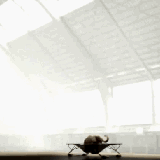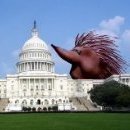Worst Joke Ever 2025
-
Recently Browsing 0 members
- No registered users viewing this page.
-
Topics
-
-
Popular Contributors
-
-
Latest posts...
-
735
Israel Hamas War the Widening Middle East Conflict
I would call it an example of the terrorist tactics Hamas uses to control the Palestinian population. -
7
Avoided denial of entry
This STORY does not pass the sniff test. I say no way did this happen. -
11
Transport Thailand's Railway Expansion: A 297.9 Billion Baht Endeavour
Nice anti-Chinese rant. Do a little research maybe next time. Thailand's double track expansion has nothing to do with China, doesn't use Chinese loans, doesn't have Chinese influence, so how does China have "control of the entity"? Explain your nonsense please. -
1
Legal status of cannabis in Thailand: In a constant state of reclassification
According to my friend who owns a cannabis store, everyone will need a script. -
27
Norwegian tourist, 21, is barred from entering the US after ICE guards find JD Vance Meme
Great weather, cheap weed and pussy. America is great, but it gets cold and the pussy is terrible. Fabulous steaks though -
16
Chatting up the farang totty.
Fantastic. What an absolute marvel you are, Bob. You and Lewie both managed to charm farang beach babes in Pattaya on the very same day. What are the odds? Two seasoned gentlemen, two tales of seaside seduction, all unfolding within 24 hours. Incredible. Unbelievable. Bob-tier brilliance. Dare I say… Amazing Thailand™. And naturally, your decision to share your story tonight had absolutely nothing to do with Lewie’s post going up earlier. Total coincidence. Just one of those magical Pattaya alignments, right?
-
-
Popular in The Pub













Recommended Posts
Create an account or sign in to comment
You need to be a member in order to leave a comment
Create an account
Sign up for a new account in our community. It's easy!
Register a new accountSign in
Already have an account? Sign in here.
Sign In Now